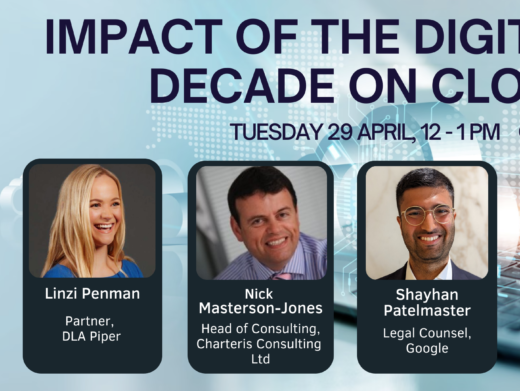I would like to begin by thanking you for this invitation. This is the firstoccasion on which I have been invited to speak on the role of IT in the law. Iam grateful to have the opportunity tonight of setting out my views – and to asociety whose members can hold up the example of a quarter of a century ofdedication to promoting the role of technology in the justice system.
The Society has also played an important role in ITAC – the IT and theCourts Committee – since the committee was formed in the mid 1980s, byproviding the secretariat, organising events and contributing to the on-goingdebate on the role of IT in the courts. I want to thank you for your importanthelp in this.
Now, I do not claim to be an IT expert. Indeed I was trained in an age whenthe pen was mightier than the mouse: but I am an enthusiast in promoting IT inthe justice system. The advances in technology which are now becoming availablemust be as familiar and natural to every one of us as picking up a pen, or usinga telephone. IT must be accessible to all – not the exclusive domain of theconnoisseur.
Let me run through some of the IT work currently in hand in my own Departmentso as to demonstrate our commitment to it. Our work includes immediate targetsand long-term plans. Specific projects with a modest impact, and vastinitiatives with the potential to affect the whole justice system. There is theautomation of existing processes, and the innovation to create entirely newfunctions and procedures. Much of the substantive work which I am sure may befamiliar to you is taking place in the Court Service.
The Civil Justice reforms are one of the most ambitious aspects of myDepartment’s modernisation programme. As part of that programme we areimplementing a comprehensive IT system which will support all aspects of civiljustice case management. Concerns have been voiced, because the full IT systemwill not be available when the first phase of the reforms comes into effect nextApril. I am satisfied that this is the right timetable, and the right way toimplement these major changes. Introducing the new procedures with partial ITsupport lets us stagger the inevitable pressures of such major areas of change.We will have time to pilot the procedures, to learn lessons in the early monthsof the new regime. These will help to ensure the quality of the full IT system– to guarantee that it can cover the entire county court network, effectively.
By April 1999, there will already be considerable technological support forthe reforms. This will include updating the Summons Production Centre, whichissues and automatically dispatches nearly a million summonses a year; enhancingthe County Court Bulk Centre; giving the High Court a computerised system toproduce court orders, letters and notices. And CaseMan will be enhanced, toenable case histories to show what has happened to cases and to produce the newforms required under the new rules. A simple, stand-alone system will beinstalled in all courts, to monitor the return of key documents such as theAllocation Questionnaire, until the full IT support is available. CaseManalready enables the electronic transfer of case details, warrants, attachment ofearnings orders and numerous other processes in the county courts.
CREST in the Crown Court continues to speed case handling. It is now beingadapted to help in the rapid transfer of indictable-only cases to the CrownCourt, as part of the drive to reduce delay in the criminal justice system.
Following the ‘Transforming the Crown Court’ report, the Court Service istaking forward a major project to reduce delay, and to improve customer service.It will be underpinned by a new IT system, CREDO, which will moderniseprocedures in the Crown Court and improve links with all the other agenciesinvolved in the criminal justice system. More use will be made of electroniclinks with other agencies, to speed up the transfer of information and reducethe amount of data entry required. CREDO will replace the present manual systemof jury summoning and management with a computerised jury summoning system. Thiswill randomly select jurors’ names from the electoral rolls of the relevantlocal authorities, and generate summonses and records.
Last month, I announced my proposals for the effective delivery of communitylegal services. These will work to ensure that peoples’ needs for legal helpare properly assessed, and promptly met. A key part of this will be thedevelopment of information technology – providing advice and information onthe Internet, and online advice services. Easy to use, easy to accessinformation, in plain English, will help people to understand what their rightsare, and how to enforce them. The availability of before the event advice, andadvice at an early stage of a dispute, will help people to avoid the escalationof disputes, or resolve them without going to court.
It is hoped that the contract to establish LIBRA, the unified automationsystem linking all magistrates’ courts, will be completed before Christmasthis year. It will replace the existing, but outdated systems, boostingcomputerised functions by around 50%. It will include electronic links to theCrown Prosecution Service, the police, probation services, prisons, and otherrelevant agencies such as the DVLA. Together with in-court computing, this willyield substantive savings in the adjournments and delays which currently clogour magistrates’ courts. Ultimately, LIBRA will be one part of the nationalnetwork which will link all magistrates’ courts to each other, and to thenetworks of the higher courts, to the other agencies in the justice system, andeven to legal practitioners.
The effective delivery of criminal and civil justice is dependent on thestrength of the good working partnerships which we are building now. These willinclude the ability for all players in the process to access the relevant casedata, promptly and easily. The systems that my Department are putting in placenow are being designed to comply as fully as possible with this essential aim.Because of my conviction that IT is vital for a modern justice system, I amencouraging and promoting the wholesale investment of my Department’s time,money, and human resources in this comprehensive array of initiatives.
IT serves the overarching aims this Government has set out for civil andcriminal justice. We are working to secure better, quicker, more effectivedelivery of justice at every point in the system.
Already, the use of document scanning and imaging in some of the most complexand serious recent fraud cases in this country has been of widely acknowledgedbenefit. Lawyers who have been involved have asserted that the use of technologymade potentially unmanageable trials manageable.
When all agencies in the justice system are linked by effective technology,the benefits extend far beyond the courtroom. The savings in time, in labour, inthe avoidance of errors, will help the work of police, prisons, social services,and local authorities.
I am, of course, pleased to say that the LCD Web site – www.open.gov.uk/lcd– has received many compliments for its design, its ease of access and thedetailed information it contains. It currently averages some 2,200 visits eachweek. And yes, if you are very keen, all my very many speeches are on the Website. I am determined that my Department will be riding the crest of the IT wave– not being dragged in its wake.
To ensure this, we are taking care to ensure that IT developments in theCourt Service and the magistrates’ courts are taken forward within rigorousand detailed strategic plans. Effective planning, including demanding butrealistic timetables, helps us to assess what the most immediate needs are, andhow they can best be met.
One example of this is the extensive and detailed analysis taking placethrough the civil.justice consultation paper. This work will help us to plan therole of IT in civil justice over the next five to fifteen years, both in thecourts and beyond; for this Department and for our partners in the civil justicesystem as a whole. I understand that the Society is currently working on itsresponse, and I look forward to reading your observations.
The same commitment to forward planning and forward thinking is demonstratedin our support for the Government’s Pledge 2000. For my Department, thisincludes not only work to protect our own systems against the potential damageof the Millennium Bug, but also work to promote consensual, rather than legal,steps to resolve disputes which may arise in the wider business community wheresystems fail to beat the Bug.
Our planning is working well. For example, I spoke earlier of the commitmentto implementing Phase One of the Civil Justice Reforms, in a context whichincludes the planned, phased introduction of the relevant technologies. Thoseareas which the integrated system does not cover – such as Diary Monitoring– will be met by alternate manual or stand-alone systems. We will be able tokeep up the momentum for reform, whilst ensuring that the IT which underpins itcan deliver the necessary support.
Consider too the use of IT by the judges. Earlier this year, 23 members ofthe judiciary took part in a pilot scheme to test training, computer equipmentand support services, as the first phase of the Judicial Training Project.Generally, the pilot was a success. Its second phase will aim to train, equipand support a further 145 judges, and then move on to extend support to allmembers of the judiciary. I am delighted that judges have shown themselves to bemost enthusiastic users of technology. Eager and imaginative in trying out newprocesses and equipment and developing new protocols. But I would ask: would ithave been the same if we had imposed a regime of IT unilaterally? Or would somany judges have been prepared to take the time and trouble to try the newtechnology, if my Department had not offered support, training, equipment andadvice? So I commend those of you who are taking the pioneering path. Yoursuccess with IT, your support for its benefits, will do a great deal to temptyour more reluctant colleagues to try what is on offer. And my Department willcontinue to seek the best way to encourage and support the use of IT, at arealistic pace for all concerned.
But I emphasise this: the integration of effective computerisation into allaspects of the law is not – must not be – for technology’s sake. But forwhat it can give to the justice system. I want IT to help in the delivery of ourcomprehensive reform of civil and criminal justice. To help deliver greateraccessibility. Productivity. Consistency. Speed. Quality. Efficiency. To focuson the needs of the users, and to improve access to justice for everyone. So Ihope that all of you will continue to give the technology, and the reforms, yourfullest endorsement.
Before I finish I would like to propose a vote of thanks to BobMarshall-Andrews MP who has made this beautifully wallpapered room available andto host this evening. Bob has been in the papers this week for promoting a finepiece of modern domestic architecture in Pembrokeshire. So now Bob and I do havesomething in common. We have both been criticised for supporting fine design. Itis a funny old world isn’t it Bob? I am labelled as the author of a fin desiecle Pugin revival and you as a Teletubby.
It only now remains for me to thank you Mr Chairman, Ladies and Gentlemen,for this delightful dinner, and the pleasure of your company. In doing so, Iwould like to propose a toast to ‘The Society for Computers and the Law’.



